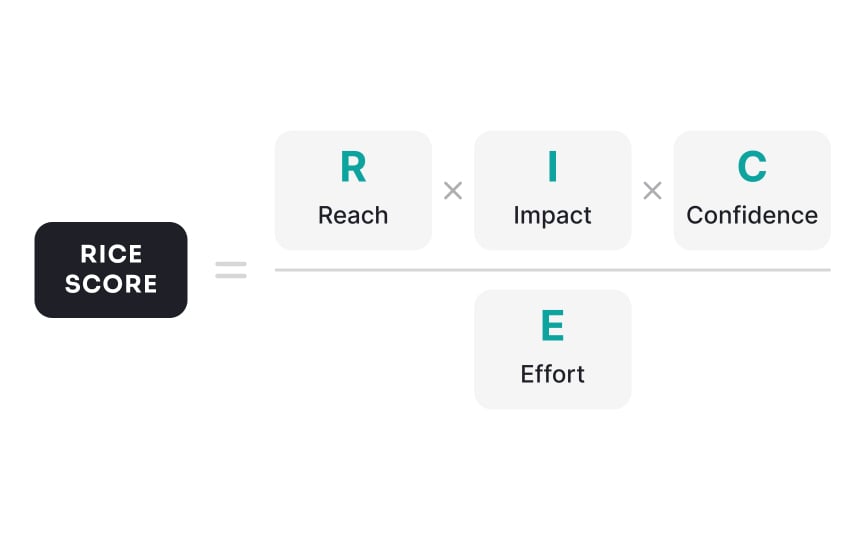Applying the RICE framework to feature decisions
Prioritization frameworks bring structure to product decisions and reduce reliance on gut feeling. Two of the most common are ICE and RICE. Both rely on scoring ideas across a few dimensions to create a comparable score, but they differ in depth.
RICE brings objectivity to the process of prioritization. RICE evaluates each feature across 4 dimensions: Reach, Impact, Confidence, and Effort. The formula (Reach × Impact × Confidence ÷ Effort) produces a single score for comparison.
For example, a feature reaching 2,000 users per quarter with high impact (2x), medium confidence (80%), and requiring 4 person-months yields a RICE score of 800. This helps prevent loud voices from dominating and forces teams to quantify assumptions with data.
ICE is a lighter variant that skips Reach and Effort, using only Impact, Confidence, and Ease. The score is simpler to calculate, which makes it approachable for teams new to prioritization or working under time pressure. A high-impact idea with medium confidence and strong ease of implementation would score high in ICE, signaling it’s likely worth pursuing.[1]
Many teams start with ICE for quick decisions and move to RICE as products grow and decisions carry higher stakes.

